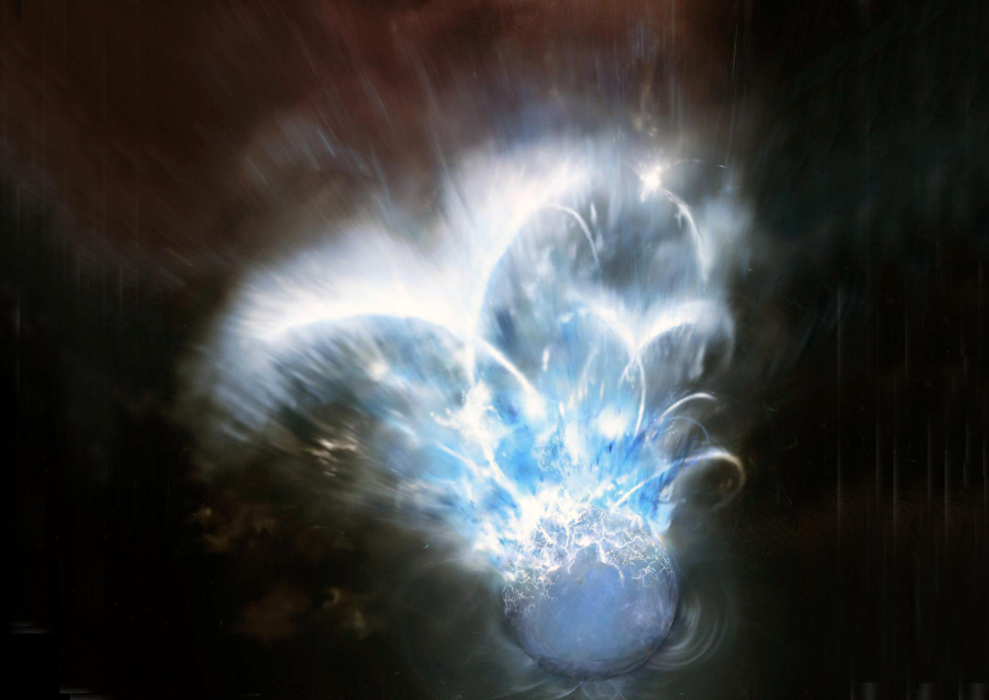
 Credit: Birkeland Centre for Space Science/Mount Visual
Credit: Birkeland Centre for Space Science/Mount Visual
Short, Sharp, Shocked
Prior to the advent of the global positioning system, finding your way on earth used to best be accomplished using the earth's magnetic field. The earth can be thought of as a bar magnet, where motions of electrical currents in the earth's interior generate a simple dipolar magnetic field, one with a north and south pole and a magnetic axis connecting them. The earth's magnetic field is actually fairly weak though - which is a good thing. Much stronger magnets have existed at certain magnetic "hot spots", localized regions where the magnetic field can be enormously intensified. Two notable magnetic hotspots on earth have been the Massachussetts Institute of Technology (at about 42 degrees north latitude and
71 degrees west longititude), and the Los Alamos National Laboratory (at about 35 degrees north latitude and 106 degrees west longitude). At times the magnetic field at MIT has artificially become about 400,000 times the earth's average field strength, while the magnetic field strength at Los Alamos has sometimes been 2 million times stronger than earth's. Localized magnetic hotspots are fairly common among magnetized objects: on the Sun they appear as dark sunspots, from which enormous solar flares can be generated. A special type of neutron star called a magnetar is an more extreme example. Magnetars, like neutron stars, are the rotating, superdense leftover core of a collapsed star. But the magnetic fields on magnetars are the strongest in the Universe, trillions of times the strength of the magnetic field on earth (and about 1000 times stronger than the field of the typical neutron star). The magnetic fields on magnetars can form magnetic hotspots on the neutron star's surface and these hotspots can release an almost unbelievable amount of magnetic energy. On April 15, 2020, an instrument on the International Space Station called the Atmosphere-Space Interactions Monitor saw something very surprising. ASIM is designed to see short burst of high energy X-ray and gamma-ray radiation in the earth's atmosphere. But on that date, ASIM saw a burst of high-energy radiation apparently from an object in a galaxy about 10 million light-years above earth's atmosphere. This burst of energy lasted less than 0.2 seconds, but released as much energy as the Sun has in the past 100,000 years. The high-energy variability seen by ASIM also showed two high-frequency variations occurring a few thousand times each second. Scientists believe these rapid, powerful bursts could only be produced by a release of magnetic energy from the enormously powerful magnetic field of a magnetar, perhaps looking something like the illustration above.
Published: January 10, 2022
<
HEA Dictionary ● Archive
● Search HEAPOW
● Other Languages
● HEAPOW on Facebook
● Download all Images
● Education ● HEAD
>

Each week the HEASARC
brings you new, exciting and beautiful images from X-ray and Gamma ray
astronomy. Check back each week and be sure to check out the HEAPOW archive!
Page Author: Dr. Michael F. Corcoran
Last modified Tuesday, 27-Feb-2024 10:15:16 EST


